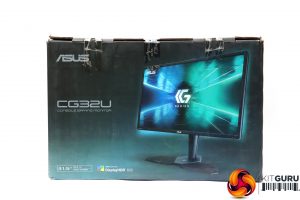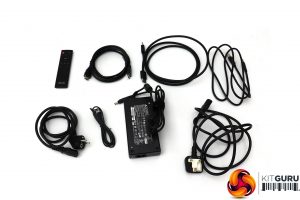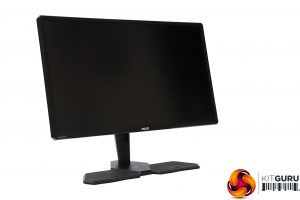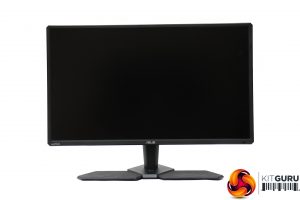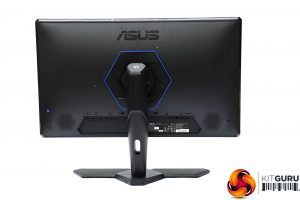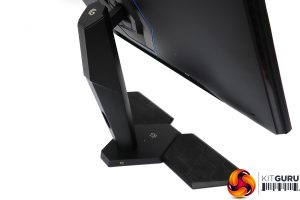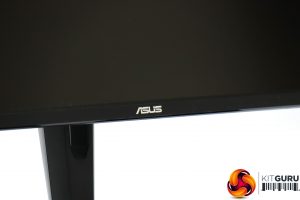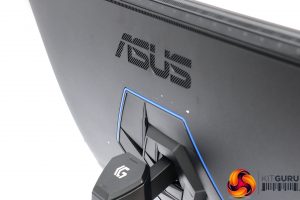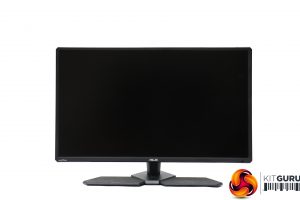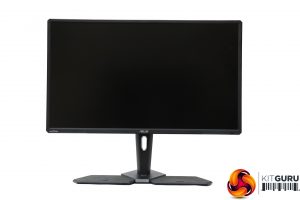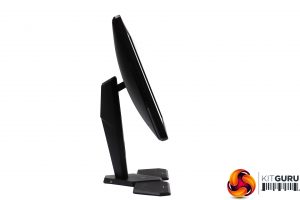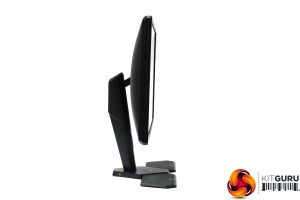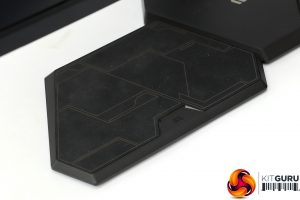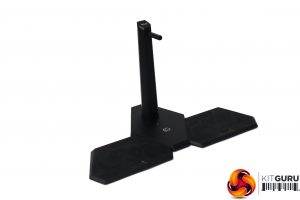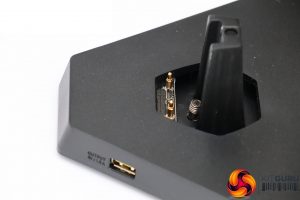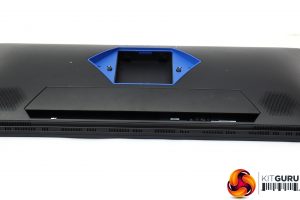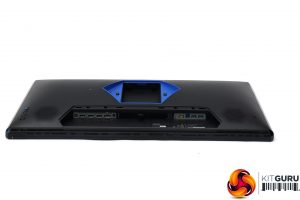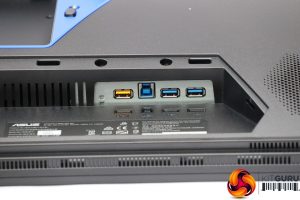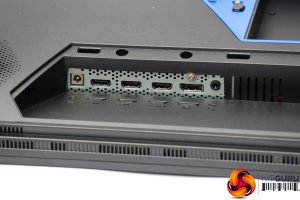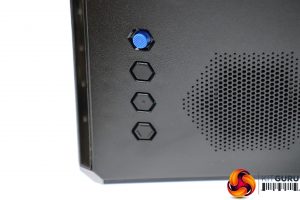The Asus CG32UQ box is surprisingly coy about this screen's console gaming intentions. We'd would have expected to see an Xbox or PlayStation somewhere.
There are quite a few bits and bobs inside. Apart from the requisite power brick and cords for EU and UK sockets, plus both DisplayPort and HDMI cables, there's a USB upstream for hooking up the hub. More unusual is the USB Type A to Micro-USB, the function of which we will discuss shortly. There's also a remote control for operating the OSD from the comfort of your sofa – a welcome convenience for the lean-back experience of console gaming.
The CG32UQ is a fairly sober visual design by gaming screen standards. The blue hexagon on the rear around where the stand meets the panel is the only flash of colour. The appearance is solid but not overly exciting. However, turn this screen on and the dots you can see around edge of the rear of the bezel light up – these are ambient lighting that can be set to react to the hue of what is onscreen.
You only get a few adjustments, including raising and lowering by 100mm and tilting 20 degrees backwards or 5 degrees forward. The screen is statically fixed to its base with no swivel available.
However, the base has a bit more going on than your average monitor stand. The angular surfaces on either side are strangely reminiscent in shape to a console control pad, and if you look closer you will see a symbol of this very item. They're there for you to place your controllers when not in use. Even better, USB charge-only ports are located on either side at the rear. You attach your controllers' cables to these and can conveniently charge them.
The base of the stand has another trick up its sleeve, which comes into play if you wall-mount the panel. Obviously, then you don't need the stand, but you can use the bundled USB Type A to MicroUSB cable to route power from the screen (or another USB source) so you can still use it as a charge station for your controllers. There's also an extra plastic tower that can be attached. This has a bracket on which to hang your headset. Altogether, quite well thought out.
The ports are hidden behind a plastic panel that pops out. On one end is the power input, followed by the three HDMI 2.0 inputs, DisplayPort, and the audio minijack output. On the other side of the stand is the USB hub. There's a Type B upstream input and two USB 3.0 outputs. The yellow USB output is for powering the stand if it's being used separately from the monitor. Otherwise, power contacts in the stand itself relay power to the USB ports in the base.
Unless you're using the remote control, a joystick and three hexagonal buttons are used for operating the OSD menu.
 KitGuru KitGuru.net – Tech News | Hardware News | Hardware Reviews | IOS | Mobile | Gaming | Graphics Cards
KitGuru KitGuru.net – Tech News | Hardware News | Hardware Reviews | IOS | Mobile | Gaming | Graphics Cards


